When it comes to wilderness survival situations, one of the issues that often gets overlooked but proves to be a real challenge, is the presence of insects and other pests.
One of the most common enemies when it comes to bothersome insects that exist in the outdoors, is the mosquito.
Mosquitoes are known to be among the most annoying and potentially dangerous insects in the world, not to mention the fact that they are completely useless and serve no benefit to the earth or the living beings on it.
These pests are truly the bane of our existence as humans, and are actually a lot more dangerous than many people give them credit for.
Let’s discuss the main potential issues that mosquitoes pose in a survival situation, as well as go over the process of building a do-it-yourself mosquito trap.
Why Are Mosquitoes A Problem In Survival Settings?
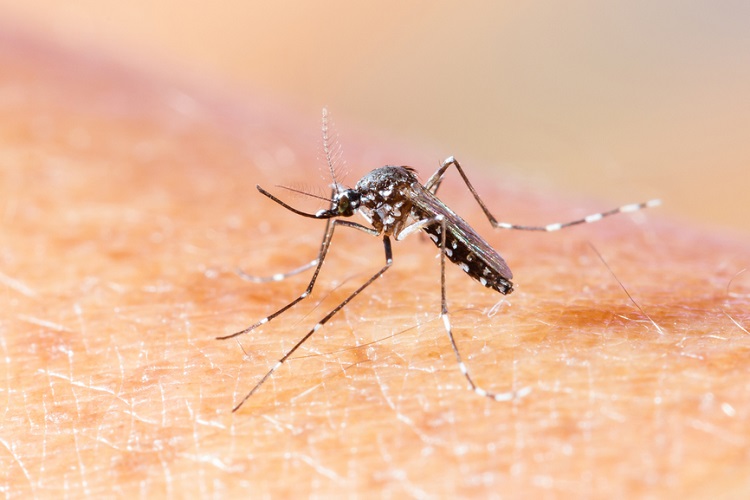
Mosquitoes are considered by some to be the most dangerous animals on the planet.
These fragile little pests that can be killed with one swat have earned that title by spreading deadly diseases. One bite can infect a human’s blood stream, and in many cases the host has absolutely no idea that they have just contracted a potentially fatal illness.
Diseases spread by mosquitoes kill over a million people each year, and infect more than one BILLION. These diseases can produce a variety of symptoms like excruciating pain, brain damage, nervous system damage, blindness and other serious effects.
One of the more prominent diseases that mosquitoes have been known to spread is the yellow fever, which has been deemed by the World Health Organization to be “the original viral haemorrhagic fever”. In addition, mosquitoes spread illnesses like malaria, west nile and the zika virus.
In a survival setting, it is incredibly important to do everything you can to maintain your health and overall mental clarity, that includes avoiding mosquito bites at all costs. Mosquitoes can carry a plethora of different illnesses causing viruses and bacteria, which is exactly what you do not want while dealing with a survival situation. You need to be in optimal health to properly assess and deal with the problems at hand.
Aside from the potential to contract harmful illnesses, mosquitoes are notorious for contributing to sleepless nights for people surviving in the outdoors. Mosquitoes are known to be incessant when it comes to landing on exposed skin and flying around the ears and head while people are trying to sleep.
Although this may seem trivial, suffering from a lack of sleep while in the midst of a survival situation can be a recipe for disaster. Without proper sleep your body will not re-energize itself overnight and as a result you will not be in optimal form for the following day’s endeavours.
Sleep deprivation is not only harmful to your mental clarity and physical energy, but it can also make you more susceptible to falling ill or succumbing to the elements.
Are Mosquito Traps Efficient?
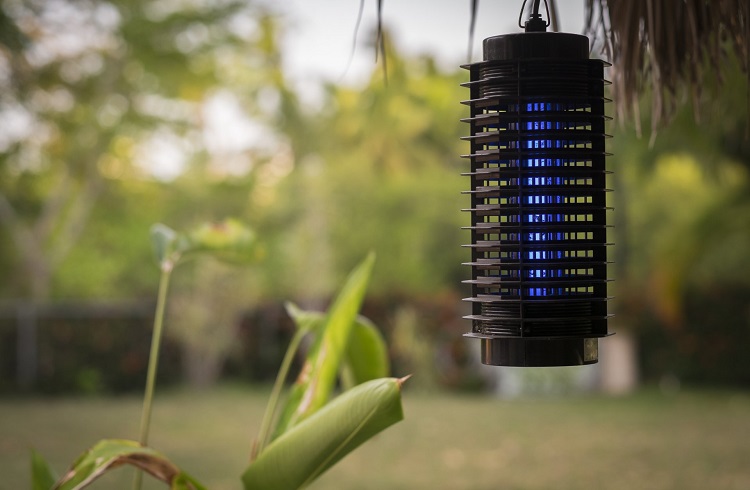
Commercially built mosquito traps are known to be quite effective mosquito repellents based on a number of aspects.
They are typically designed to incorporate a number of olfactory (smell), visual and thermal cues that are intended to attract hungry female mosquitoes who are looking for blood meals.
These mosquito traps are efficient as they combine a number of important cues that will make them irresistible to mosquitoes. Citronella candles, bug zappers, dynatraps, fan traps, mosquito netting, and pesticides are popular commercially built mosquito killers.
These cues exist in a number of forms:
Olfactory Cues
Carbon Dioxide
Mosquitoes will detect higher levels of carbon dioxide concentrations in the environment while seeking hosts for blood feeding. The carbon dioxide-baited traps are a mosquito magnet.
Lactic Acid
Lactic acid is a compound that is commonly found in sweat after exercise or after consuming a meal that is high in sodium or potassium.
Studies have shown that combining lactic acid with carbon dioxide and other attractants can help increase the effectiveness of mosquito traps.
Octenol
Octenol is a compound that is found in perspiration and breath. It is formed when linoleic acid is broken down by the body.
Mosquitoes antennas are capable of picking up well over 300 chemical odors produced by human skin, one of which is octenol. Octenol saturated strips are often used in mosquito traps making for some of the best mosquito traps.
Pheromones
Pheromones are a type of semiochemical that mosquitoes are especially attracted to. These chemicals have been shown to attract female mosquitoes as they indicate the presence of a good spot to lay eggs.
Pheromones are often used in mosquito traps as they will naturally attract female mosquitoes who are looking to lay eggs and reproduce.
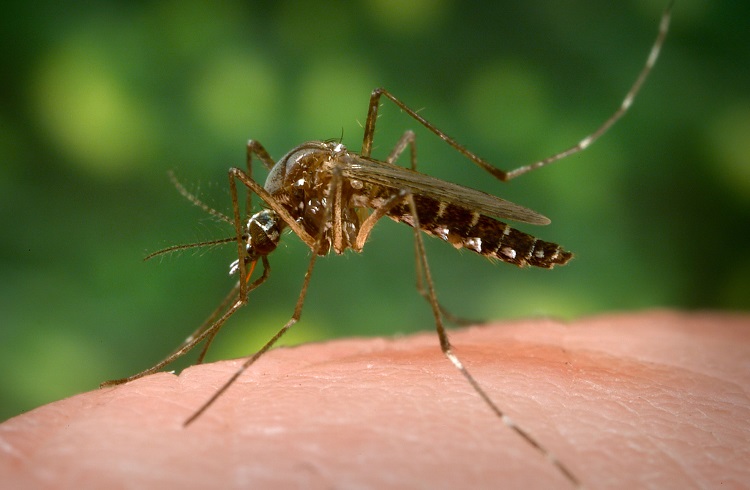
Visual Cues
Light
Mosquitoes have two light-sensitive eyes that allow them to detect different types of light for directional purposes. Traps will often use light as a visual cue in order to attract mosquitoes to their apparatus and trap them.
Colour
Different species of mosquitoes have different spectral sensitivity for colors. Studies have demonstrated that gravid female mosquitoes show a preference for black ovitraps when seeking a site to lay eggs.
Movement
Mosquitoes have compound eyes that are made up of hundreds of lenses that are meant to spot movement and distinguish their prey.
Movement cues are effective at close range. When the longer distance olfactory cues have taken effect and attracted an individual, the traps movement cues will finish the job and bring the mosquito into the waiting trap.
Thermal Cues
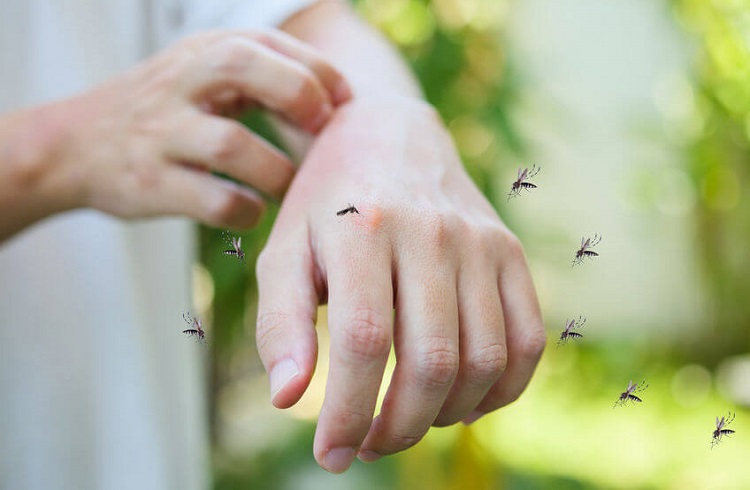
Temperature & Moisture
When seeking a warm-blooded host, mosquitoes will often use thermal sensory information to detect body heat and different forms of moisture when they are at close range.
Studies have proven that mosquitoes have a preference for warmer stimuli that have a similar temperature to the human body, in comparison to colder stimuli. Mosquito traps will often have some sort of thermal cue that will provide another form of attraction at close range.
Mosquitos are often found near standing water, one of our hacks would be to avoid standing water for optimal mosquito control.
Making A DIY Mosquito Trap
Making your own diy trap is actually a lot easier than it may seem when considering the intricate products that are commercially available. There are a number of different models and methods for making your very own DIY mosquito trap.
Let’s do a step-by-step guide for how to make one of the tried and true do-it-yourself mosquito traps.
The Snare Mosquito Trap
A bottle trap is a great way to catch mosquitoes and larvae for optimal pest control.
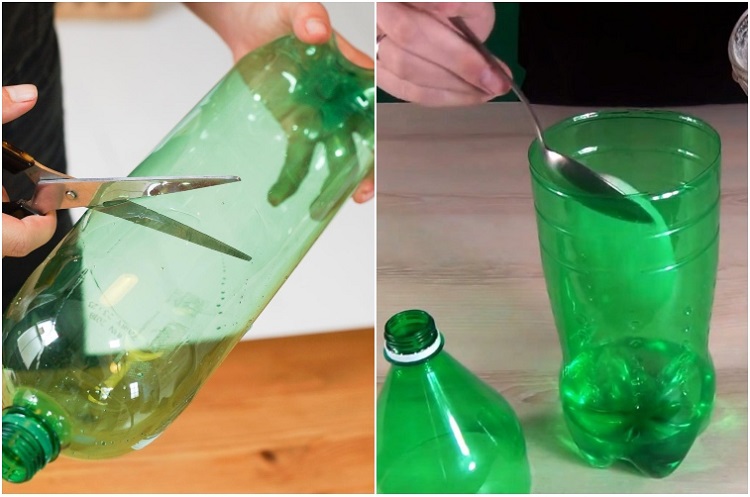
Materials:
- ¼ Cup Sugar (you can use brown sugar or white sugar)
- 1 Cup Hot Water
- 1 Gram Yeast
- Empty 2-Liter Plastic Bottle
Procedure:
- Cut the 2-liter soda bottle in half, right around the middle.
- Heat up some water in a separate container
- Add sugar to the warm water and allow the granules to dissolve, making sugar water
- Once your sugar mixture solution has cooled down, pour it into the bottom half of the 2-liter bottle you prepared in step 1.
- Add the yeast, which will catalyze the carbon dioxide producing reaction
- With the top half of the bottle, remove the cap and flip it upside down
- Insert the inverted top of the bottle into the bottom half of the bottle, creating a funnel
- Tape or adhere the two halves of the bottle together securely
- To ensure the trap’s effectiveness, you can wrap the outside of the assemblage with a cloth or other covering
Once your trap has been constructed, place the snare above ground somewhere in a shaded part of the space. Try to keep it away from any gathering spots.
This trap works when the mosquitoes become attracted to the carbon dioxide emitted by the mixture at the bottom of the bottle. The mosquitoes will gather and enter through the funnel, where they will effectively come in contact with the mixture and drown.
Empty your snare and add more of the same mixture once every 2 weeks or as needed.
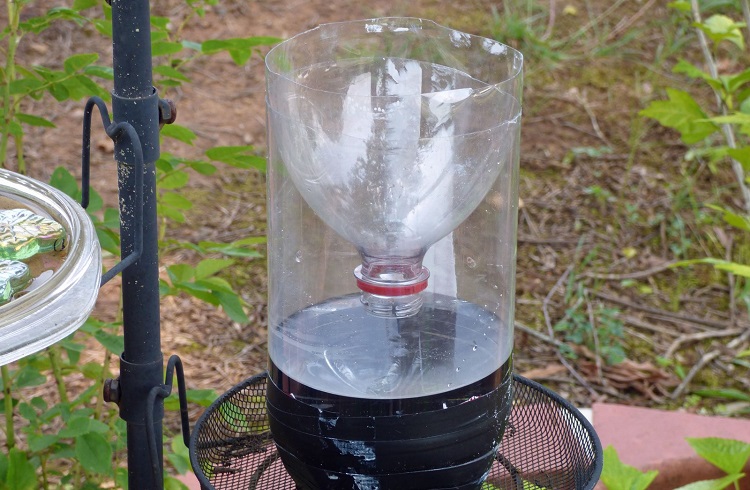
Conclusion
Mosquitoes, although fragile and seemingly insignificant as a threat, are actually considered in some ways to be the most dangerous insect on earth.
They have been known to spread deadly diseases that can affect their victims in a variety of ways including blood-borne illness, nervous system damage, blindness, and more. When it comes to survival situations, mosquitoes pose a real threat, especially over longer periods of time.
Maintaining your health and mental clarity is crucial for survival, both of which can be threatened by mosquito-transmitted illnesses. In addition, mosquitoes can become a real problem for maintaining sufficient levels of sleep while in an outdoor survival scenario without proper shelter. Sleep is crucial for many reasons, so this can definitely become an issue over time.
We have covered these important topics, as well as given a step-by-step breakdown of how to build yourself a homemade mosquito trap. Take these things into consideration, and always be prepared to protect yourself from these dangerous pests in a survival situation.
If you are looking for portable insect traps, you may be able to pack your go bag with a few options to prepare for a survival situation. Amazon has great, portable bug killer options.
References

[lasso rel="emergency-preparedness-more-a-manual-on-food-storage-and-survival-2nd-edition-revised-and-updated" id="35334"]